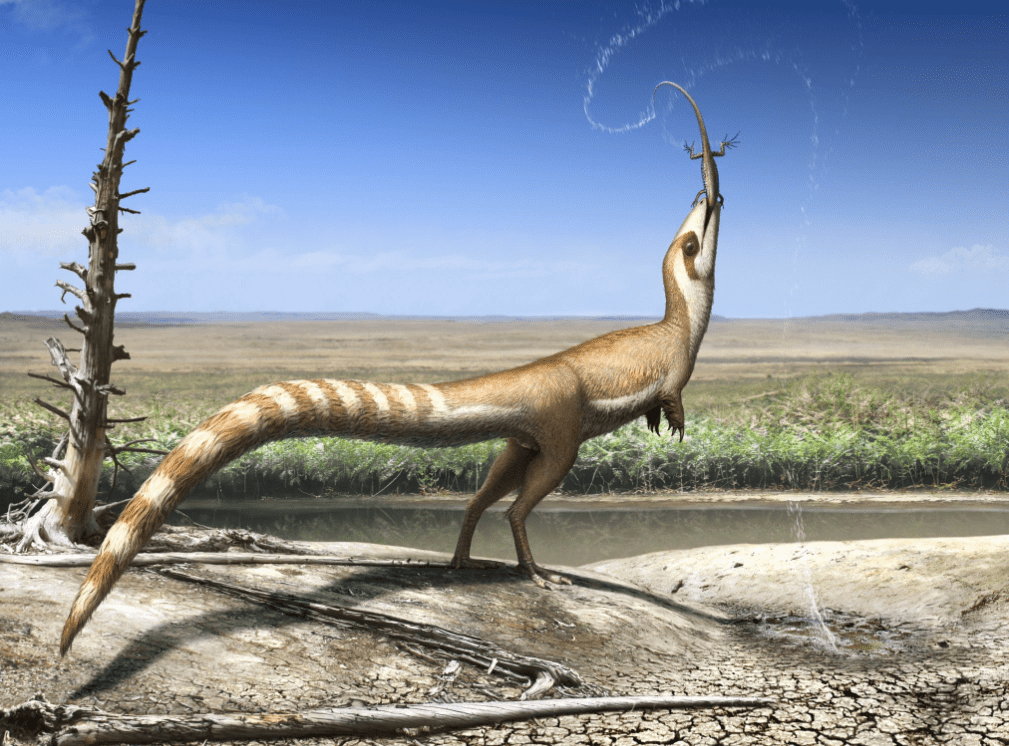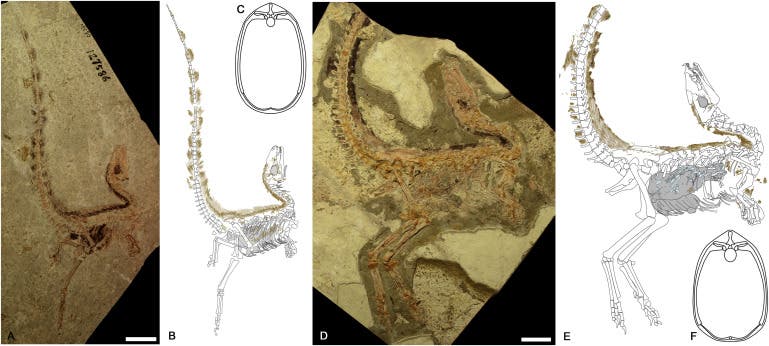
Sinosauropteryx is the earliest dinosaur taxon we’ve found outside of Avialae (i.e. living dinosaurs, birds) that bears evidence of feathers. It lived during the early Cretaceous in the temperate climate of northeastern China some 130 million years ago. Now, scientists claim the dinosaur wore its plumage with style. Its eyes were patched with distinct coloring, like a masked bandit, while the tail was striped like a raccoon’s.
A mask carved in ‘stone’
The dwarf dinosaur didn’t grow larger than a meter from snout to tail. It was a theropod dinosaur (literally “beast-footed”), a large and diverse family which included the largest terrestrial carnivores ever to have made the earth tremble, among them the famed T. Rex.
When Sinosauropteryx was first described in 1996, it excited paleontologists all over the world due to its feathery coat. Suddenly, most dinosaurs weren’t necessarily scaly but, as subsequent discoveries showed, also feathered. The dinosaur’s plumage was rather fuzzy and primitive, though — ill-equipped for winged flight.

In 2010, researchers at the University of Bristol and the Zhonghe Zhou of the Institute of Vertebrate Paleontology discovered ancient color-producing sacs in fossilized feathers from the Jehol site in northeastern China. The pigment-packed organelles, called melanosomes, enabled the researchers to infer that the dinosaur likely had light and dark feathered stripes along the length of its tail. The darker regions of the tail were packed with phaeomelanosomes — spherical organelles that produce and store the pigment responsible for the rusty reds of red-tailed hawks and red human hair — indicating they were russet-orange in color.
“We always tell introductory palaeontology students that things like sound and colour are never going to be detected in the fossil record,” paleontologist Michael Benton of the University of Bristol told Nature at the time. “Obviously that message needs to be reconsidered.

Now, in a new study published in the journal Current Biology, researchers at the University of Bristol have produced an even more accurate picture of Sinosauropteryx. Three fossils whose melanin pigment was still well preserved allowed the scientists to reconstruct the dark-hued plumage of the animals’ bodies. They found that a dark ‘mask’ was wrapped over the eyes of the dinosaur, which connected over the top the skull with other dark feathers that lined the back. At the base of the tail, the dark bands were thinner and more closely packed together. Closer to the tip, the bands were wider and spaced farther apart.

Sinosauropteryx‘s belly was probably white — a prime example of countershading, or Thayer’s Law, a method of camouflage in which an animal’s coloration is darker on the upper side and lighter on the underside of the body. The contrast counteracts the otherwise typical patterns of shadows and brightness cast by sunlight. Such camouflage would have been useful in evading predators and eluding prey.
“A clear darker dorsum and absence of pigmented plumage ventrally, with the light ventral side extending to the tail until at least the tenth caudal vertebra, conforms to what would be expected for countershaded camouflage adapted to reduce detection from visual predators and from potential prey,” the authors wrote in the paper.
Here’s where the really amazing part of this study comes in. Because countershading is inherently tied to the environment, the researchers were able to reconstruct Sinosauropteryx‘s environment as it likely looked like 130 million years ago.

The scientists first devised a 3-D model of the dinosaur, complete with its various colored patterns, then took pictures under different lighting conditions. This is how they found the dinosaur was adapted to open, sunny environments. Today, the part of China where the fossils were unearthed is a forest landscape.


